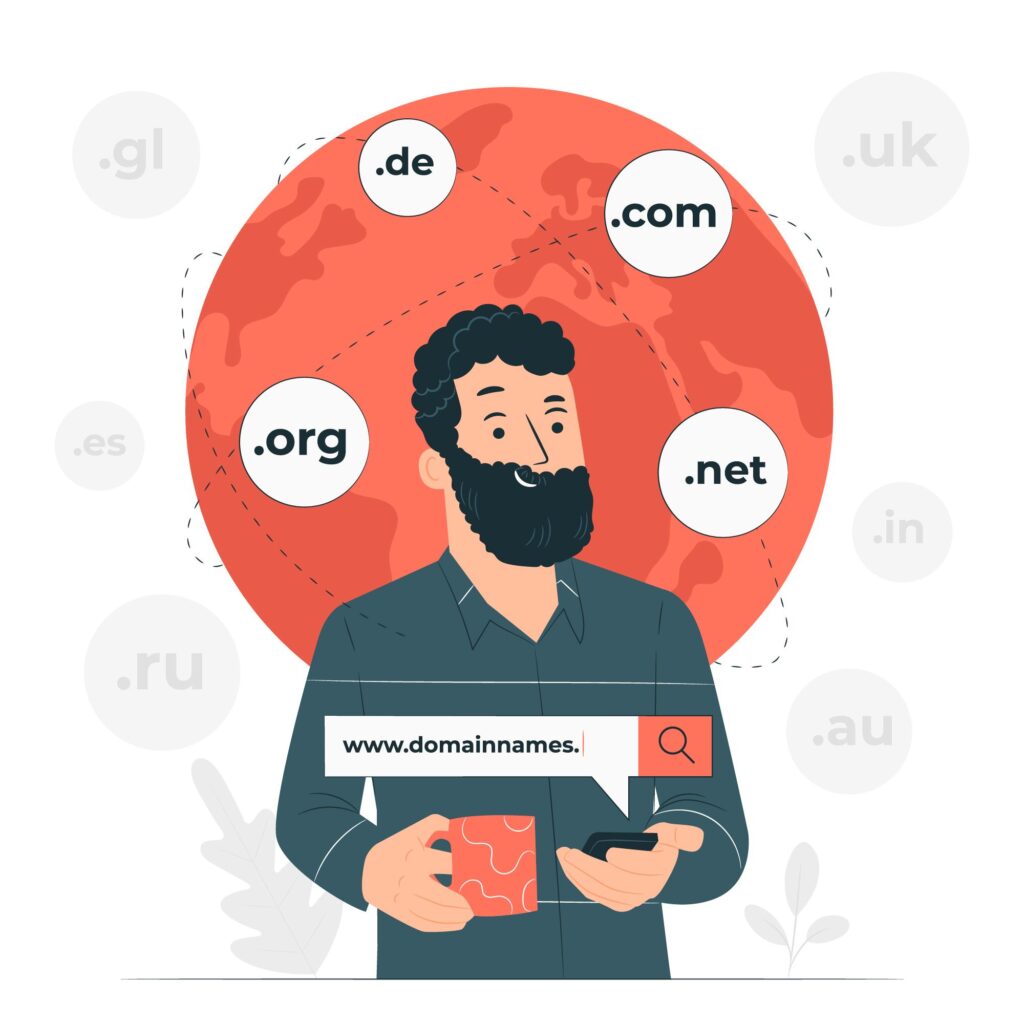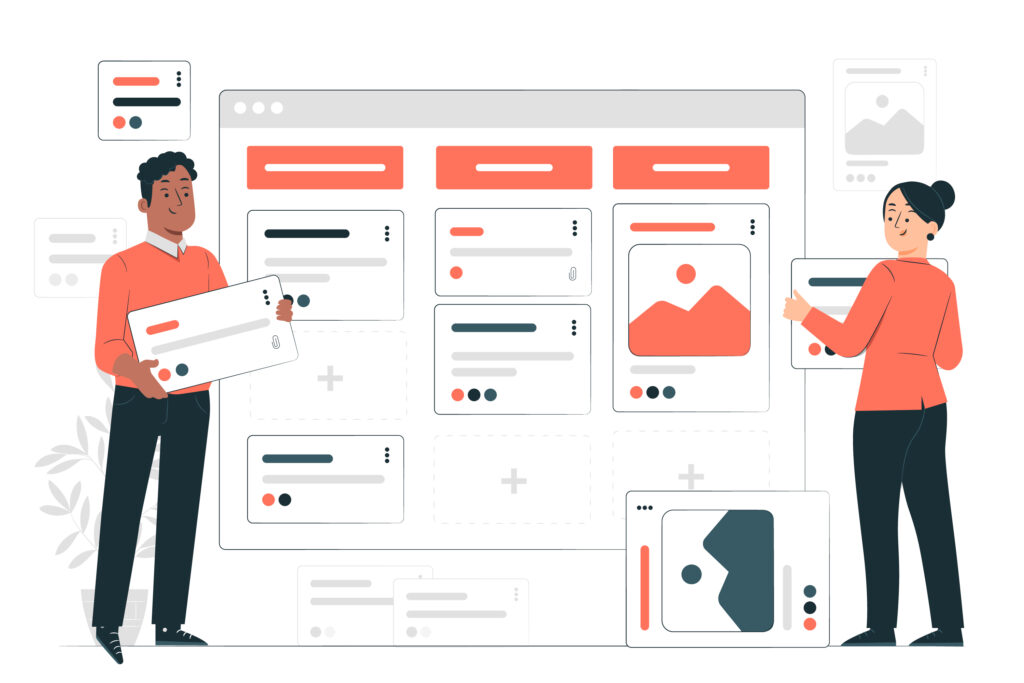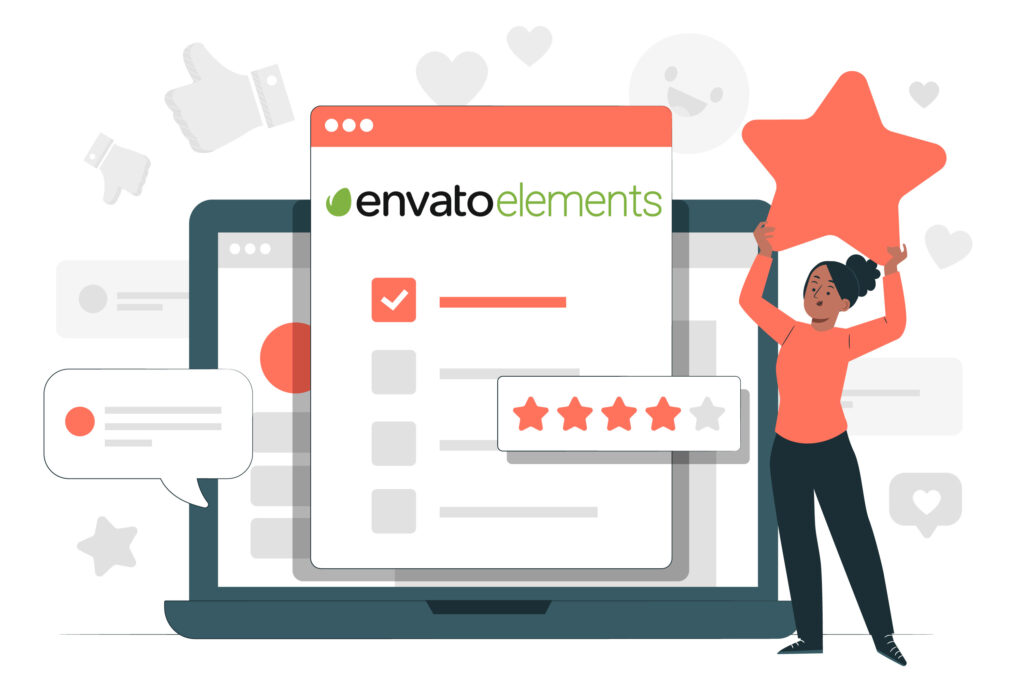How to Start a Blog [Step-by-Step]
How to Start a Blog and Make Money
If you've ever wondered how to start a blog but didn't know where to begin, you're in the right place. So, starting a blog is an exciting venture that allows you to express your creativity, share your expertise, and potentially earn income along the way. A blog isn't for talking or telling your life's story. It's for doing big stuff and making money. Also, in this comprehensive guide, we will show you how to start a blog and turn your passion into income.
The Evolution of Blogging
Blogging began in the 1990s as online journaling. At first, people wrote about their lives, but then they started sharing lots of information and ideas. In short, as more people got on the internet, blogs got better, with more pictures, videos, and cool stuff.
Types of Blogs
Blogs come in different shapes and sizes, catering to diverse interests and audiences. Some common types of blogs include:
Personal Blogs
Personal blogs are like an online reflection of someone's life, thoughts, and opinions. It is also They're a way for people to express themselves and share their stories, hobbies, and ideas with everyone on the internet.
Niche Blogs
Niche blogs are all about one thing, like fitness, travel, or technology. They're for people who like that stuff. These blogs give lots of helpful information, tips, and resources about their particular topic.
Corporate Blogs
Companies use corporate blogs to talk to their customers, share news, and give info about their industry. These blogs want to show that they're leaders in their field, make their brand strong, and connect with customers on a personal level.
Professional Blogs
Professional blogs are run by experts in a certain area. They use these blogs to share their knowledge, best ways of doing things, and deep looks into their field. This makes them look like the boss in that area.
QUICK NOTE
Blogs have a big impact online, bringing people together and sharing stories. They’re good for expressing, teaching, and business. In conclusion, as the internet grows, blogs will become more popular, letting people and companies connect with others and do good things.
How to Start a Blog: Step-by-Step
Starting a blog might seem daunting at first, but with the right approach and guidance, it can be an exciting and fulfilling journey. Here's a detailed step-by-step guide to help on how to start a blog and pave the way for a successful online presence.
Step 1: Define Your Niche
Finding your niche is the first important step in starting a successful blog. Your niche is the specific thing your blog will be all about. It’s not picking something popular; it’s about choosing something you love and know a lot about. Here’s how to figure out your niche, with an example to help. For those looking to dive deeper into niche-specific SEO strategies, consider downloading our comprehensive SEO eBook available in the eBooks section.

Identify Your Interests and Expertise
To Start a blog, begin by making a list of your interests, hobbies, and areas of expertise. Reflect on the topics that excite you and that you can talk or write about for hours. Also, your niche should match what you love and let you make stuff that your readers will like.
Research Market Demand

See How My Team Can Drive More Traffic to Your Website
- SEO – unlock more SEO traffic. See real results.
- Content Marketing – our team creates epic content that will get shared, get links, and attract traffic.
- Paid Media – effective paid strategies with clear ROI.
Analyze Competition
Check the existing competition within your potential niche. Identify the key players, their content strategies, and their audience engagement tactics. Also, find spots in your area where no one’s talking much about. Then, make cool stuff there that no one else has.
Consider Monetization Opportunities
See if you can make money in your area. Look at stuff like recommending things, selling your own stuff, or putting ads on your site. Check if people want things you can tell them about.
Step 2: Select a Blogging Platform
Assess Your Technical Requirements
First, think about how good you are with technology and what you need. Do you want something easy to use, or can you handle something harder? Most importantly, decide if you want special things like your own code, extra tools, or making your blog look like you want.

Check User-Friendliness and Interface
Check how easy different blogging platforms are to use. Look for ones that let you make and change things without any trouble. See if they have templates you can use and tools to move things around, even if you’re not great at coding.
Analyze Customization Options
Consider Scalability and Growth Potential
Think about how much your blog can grow on each platform. Look for ones that can handle more people reading your stuff, more things you want to write about, and cooler stuff you want to do. Find platforms that can take care of more visitors, let you organize your content well, and work fast even when lots of people are using it.
Review Security Measures
Look at how each platform keeps your blog safe. Choose ones that use things like SSL to keep your info private, update security often, and have strong ways to protect your data. Make sure the platform follows the rules to keep your blog safe from online threats and hackers.
Assess Support and Community Resources
Check if the platform has good help and resources. Choose platforms that answer your questions, have simple guides, and let you talk to others online for good advice. Find platforms that have videos and articles to help you learn how to use them well.
Quick Note
Choosing the right blogging platform is important for your online presence. Think about what you need for technology, how easy it is to use, making things look how you want, and being able to grow. Also, make sure it keeps your blog safe and has good help. Also, your platform should work for what you need now and help your blog get bigger later.
Step 3: Choose a Domain Name
Understand Your Brand Identity
Begin by understanding your brand identity and the core essence of your blog. Reflect on your blog’s niche, mission, and unique value proposition. Think about the important ideas and words that show what your blog is about and that people will like. Pick a name that shows what your brand is all about and what you want it to be.

Conduct Keyword Research
Find out all the important words that people use in your area. Use tools to see what people are searching for about your blog’s topic. Pick the ones that lots of people look for and use them in your domain name to help more people find your blog online.
Focus on Simplicity and Memorability
Focus on simplicity and memorability when selecting a domain name. Choose a name that is concise, easy to spell, and simple to remember. Use simple and easy words that people can remember and understand. Pick a domain name that sounds good and that your readers will like, so they can remember it and tell others about it.
Check Domain Availability
See if the name you want is available on different websites where you can register domain names. Use tools to check if the name you like is free, and think about using other endings if the main one isn’t available. Use popular endings like .com, .net, or .org to make your blog look trustworthy. In short, make sure the name you choose is different from other brands or trademarks to avoid problems.
Emphasize Brand Relevance and Consistency
Pick a domain name that goes with what your blog is all about. Make sure the name fits with your blog’s focus and what you want your brand to be. Connect your domain name with how your blog looks, the colors you use, and how you market it, so people can remember your brand and like what you make.
Consider Future Scalability
Consider future scalability when choosing a domain name. Expect the potential growth and diversification of your blog’s content and services. Choose a domain name that lets you talk about more things in the future. Don’t pick a name that’s too specific, or it might be hard to write about other stuff later if you want to.
Note
Step 4: Set Up Web Hosting
Assess Hosting Requirements
Start by thinking about what kind of hosting you need, based on how big your blog is and how many people visit it. Choose between shared hosting, VPS hosting, or dedicated hosting, depending on what your blog needs now and in the future. Look at how much space you get, how many people can visit, and if you can make your blog bigger later.

Check Uptime and Reliability
Check how often the hosting company’s servers work well. Pick ones that promise to be up a lot, have less downtime, and make your blog work well for people. Choose companies with strong systems, plans for if something goes wrong, and ways to keep an eye on your blog so it always works.
Consider Security Features
Pick hosting providers that keep your blog safe. Choose ones that use things like SSL, firewalls, and checks for bad stuff, and back up your info often. Make sure they follow the rules to keep your blog and your readers’ info safe from online dangers and bad things.
Review Customer Support
Review the hosting company if has good people to help you. Choose ones with 24/7 support, different ways to ask for help, and people who know a lot about hosting and can fix problems fast. Try asking them something before you pick them to make sure they can help you when you need it.
Compare Pricing and Value
Check how much different hosting companies cost and what you get for the price. Compare the things each plan offers, like how well it works and extra stuff like emails and moving your website. Pick companies with clear prices, ways to pay that work for you, and plans that fit what you need and how much you want to spend.
Explore Scalability Options
Think about how your blog might grow and if the hosting plan can grow with it. Choose companies that let you add more stuff as more people visit your blog and you add more things. Look for companies that can change how much they can do for you and can make special plans that work for your blog.
Note
Getting good web hosting is really important for your online presence and making sure your blog works well. Look at what you need, if the hosting company’s servers are good, how safe your blog will be, if they can help you, how much they cost, and if they can grow with your blog. Remember that good web hosting is the base of your blog’s online stuff and makes sure people can see it, it works well, and it’s safe.
Step 5: Customize Your Blog's Design
Establish Brand Identity
Start by deciding how you want your blog to look. Choose colors, fonts, and things that show what your blog is about and that the people who read it will like. Pick things that look the same everywhere on your blog, so people can recognize it and know it’s yours.

Select a Responsive Theme
Start by deciding how you want your blog to look. Pick colors, fonts, and things that show what your blog is about and that the people who read it will like. Choose things that look the same everywhere on your blog, so people can recognize it and know it’s yours.
Optimize User Interface
Make your blog easy for people to use. Keep it simple, so it’s not too messy, and let people move around and find things easily. Put your content into different parts, so people can find what they want fast.
Integrate Visual Elements
Make your blog look nice with cool pictures, videos, and other fun stuff that people will like. Use things that go with your blog’s look, tell your message well, and make reading your blog more fun and interesting for your readers.
Enhance Readability and Accessibility
Make it easy for people to read and use your blog. Pick fonts that are easy to read, use the right size, and make your text look good on different screens. Use colors and spaces to help people see your text better, especially if they have trouble reading or seeing things.
Optimize Page Loading Speed
Make your blog load fast, so people stay on it and like using it. Shrink images, use fewer things to load, and use tools that save your blog’s information to make it work faster. Choose a hosting provider with fast servers and networks that help your blog load quickly for people everywhere.
Note
Make your blog look and work the way you want by choosing the right colors and look, using a design that works on different devices, making it easy to use, adding things that look good, making it easy to read and use, and making it load fast. Doing these things will make your blog look great and be easy for people to read and use, which will make them like your blog more.
Step 6: Create High-Quality Content
Understand Your Audience
Start by knowing what your readers like and what they want. So, find out who they are, what they like to read, and what problems they have. Write about things that they care about and help them with the things they want to know or do.

Conduct Comprehensive Research
Before you write about something, learn as much as you can about it. Also, look at good places for information, like websites, books, and smart people’s ideas. Make sure what you write is true and helpful. Include different ideas and stories from experts to teach your readers more and help them understand better.
Craft Compelling Headlines
Write interesting titles that make people want to read more. For instance, se exciting words and good phrases that show what your content is about. Put words in your titles that people often search for online to help them find your blog.
Develop Engaging Multimedia
Use fun pictures, helpful charts, cool videos, and things that people can click on in your writing. So, make your blog more interesting by showing your ideas in different ways, and make sure everything looks like it’s part of your blog’s style and makes your readers want to keep reading.
Structure Content
Make it easy for people to read and understand your writing. Use short paragraphs, titles, lists, and numbers to organize your ideas and help people follow along. Write in a way that makes sense from the beginning to the end, so your readers can find what they need and understand it.
Implement SEO Best Practices
Make sure your blog shows up on search engines by using good SEO tips. For optimal visibility on search engines, consider following a comprehensive SEO tutorial. It will guide you through selecting trending keywords pertinent to your blog’s subject matter and integrating them into your posts, titles, meta descriptions, and image attributes. This strategic approach can significantly improve your blog’s search rankings and online presence.
Note
Make your blog posts really good, so your readers like what you say and feel connected to you. Know what they like, learn a lot about your topics, write interesting titles, use fun pictures and videos, organize your ideas well, and make sure your blog shows up when people search for things online. Good content will bring more people to your blog, keep them interested, and make you an expert in what you talk about.
Step 7: Implement SEO Strategies
Conduct Keyword Research
Start by finding good words or keywords people often search for in your area. Use tools to help you find popular words, longer phrases, and other words that go with what you write about. Use these words in your writing to make your blog show up more often when people look for things online. To fully understand and implement these SEO strategies, check out our SEO Training programs designed to enhance your skills and boost your blog’s visibility.

Optimize On-Page Elements
Make your blog better for search engines and readers by using good titles, descriptions, and headings. Also, write titles and descriptions that make people want to click on your blog, and use words that describe what’s on your pages. Use clear headings that help people understand what your blog is about, and make it easier for search engines to find your content.
Create High-Quality Content
Write really good stuff that helps your readers. In addition, make detailed and helpful articles, guides, and lessons that answer their questions and give them things to do. Add fun pictures, videos, and charts to make your writing even better and make it easy for your readers to share with others.
Build Quality Backlinks
Get good websites to link to your blog by working with trustworthy and popular people in your area. Write for other blogs, work with influencers, and make things together with others to get more people to see your blog. Remember, it’s better to have links from good places than to have a lot of links from everywhere.
Enhance User Experience
Make your blog easy for people to use by making it load fast, look good on phones, and easy to move around. Similarly, shrink pictures, save information to make it load quicker, and don’t use too many things that slow it down. Make it easy for people to find what they want by using a simple menu and buttons that work well.
Check and Analyze Performance
Use tools to see how well your SEO is working. Look at how many people visit your blog, where you show up when people search for things, who links to your blog, and how much people like what you write. Also, find out what you can do better by testing different things and using what you learn to make your blog show up more often and make people like it more.
Note
Make sure people can find your blog online by using good SEO strategies. So, find good words, make your pages better, write helpful things, get good websites to link to you, make your blog easy to use, and keep checking how well everything is working. Remember, SEO is always changing, so you need to keep making your blog better to stay ahead.
Step 8: Promote Your Blog
Leverage Social Media Platforms
Use social media to tell people about your blog and talk to them. For instance, make accounts on Facebook, Twitter, Instagram, and LinkedIn to share your writing, pictures, and news. Use fun things to get people interested, and talk back to them when they say something to you. Make friends with your followers and keep the conversation going.”

Engage in Email Marketing
Get people to join your email list by offering them something good. However, send them emails regularly with news and special things from your blog. Make each email personal and interesting to keep your readers excited and wanting more. Building a good relationship with your subscribers will make them feel connected to your blog.
Collaborate with Influencers
Work with popular people and experts in your area to get more people to see your blog and trust what you say. After that, find people who write and talk about things similar to your blog and work together on projects, like writing for each other’s blogs. Building good relationships with these people will help you reach more readers and become more well-known in your industry.
Explore Content Syndication
Explore content syndication opportunities to expand your blog’s reach across multiple online platforms and publishing networks. Repurpose your blog content into different formats, such as articles, infographics, and videos, and distribute them through reputable content syndication platforms and industry-specific publications. However, leverage content syndication to reach a broader audience, drive referral traffic to your blog, and increase your content’s exposure and recognition within your industry.
Take part in Online Communities
Join online groups where people talk about things related to your blog. So, share helpful tips and talk to people about their questions. When it makes sense, share your blog posts to help answer their questions. Being part of these communities will help people see you as an expert and someone they can trust.
Host Virtual Events and Webinars
Hold online events and live shows to talk to your readers directly and teach them something interesting. Also, plan fun and helpful workshops and question sessions that focus on what your readers want to know. Tell people about your events on your blog, social media, and in your emails to get them excited and interested. Offering special things or discounts can make them feel special and part of your community.
Note
Getting your blog out there is really important. So, use social media, send emails, work with popular people, share your content in different places, be part of online groups, and have online events to get more people to see your blog. Therefore, keep doing this stuff to make friends with your readers and grow a big, happy community around your blog.
Step 9: Monetize Your Blog
Implement Affiliate Marketing
Tell your readers about stuff they might like, and if they buy it because of you, you can get some money. Find good programs and things that match what your blog is about and what your readers want. Put links in your posts and reviews, so they can check them out, and you can make some money too. If optimizing your blog for search engines seems daunting, our SEO Services can help you enhance your site’s performance and attract more targeted traffic.”

Offer Premium Content and Subscriptions
Give your dedicated readers special stuff they can pay for, like e-books, courses, or a membership. Make different levels so they can choose what they want, and give them extra help and cool things to thank them for being part of your special group.
Display Targeted Advertising
Show ads on your blog to make money when people click on them. So, work with companies like Google AdSense, Media.net, or AdThrive to put up ads that your readers will like and that won’t bother them. Put the ads where people can see them and click on them, without making your blog look bad.
Offer Sponsored Content and Reviews
Work with companies to write about their products or services on your blog. Also, tell your readers why you like those things and why they might like them too. Be honest and fair so your readers can trust you, and keep your good reputation with them.
Explore E-commerce and Merchandise Sales
Try selling things online or making products that are related to what your blog is about. Make and sell digital stuff like books or templates that your readers will like. Create things like clothes, accessories, or cool stationery that shows your blog’s brand and makes you more money, while also making your readers feel like they’re part of your community.
Offer Consulting and Services
Give advice or coaching to people who want help in your area. Use what you know to help them with their problems and goals. So, offer online classes, training, or personal advice to give them what they need and make your services special for them.
Note
To make money from your blog, try different things that your readers will like and that make good income. In addition, use affiliate marketing, offer special content and subscriptions, put up ads, write about products and get paid, sell things, and give advice and services. Remember to balance making money with making sure your readers like what you’re doing. That way, you can have a good relationship with them and make money from your blog at the same time.
Conclusion
In conclusion, the journey of establishing a successful blog and earning from it is both an art and a science. With the guidance of an experienced SEO specialist, like the experts at Insightful Blog Haven, you can navigate the intricate pathways of content optimization, audience engagement, and revenue generation.
Remember, the key lies not just in the monetary rewards but also in the fulfillment that comes from sharing your passion and expertise with a global audience. Get ready to embark on a thrilling adventure of creativity, learning, and prosperity as you embark on your blogging odyssey. So, why wait? Start your blog now and have fun with it.
About the Author
Richard Martin Linga is a highly experienced SEO specialist in the Philippines. He is the proud owner of a digital marketing agency in the Philippines that offers a wide range of SEO services to businesses of all sizes and industries.
As the owner of the company, Richard brings his extensive knowledge and expertise to every project, ensuring that his clients receive the best possible results. With years of experience in the industry, he has developed a deep understanding of what it takes to create effective SEO strategies that help businesses achieve their goals.



